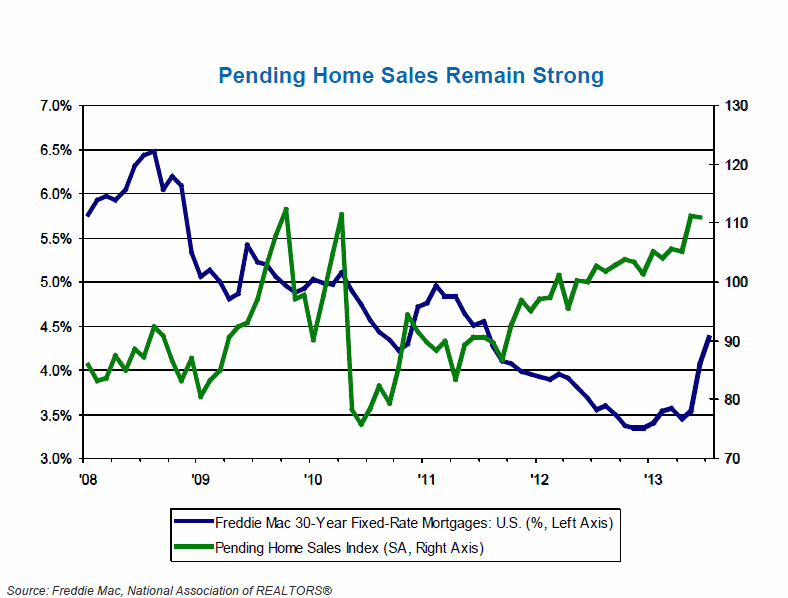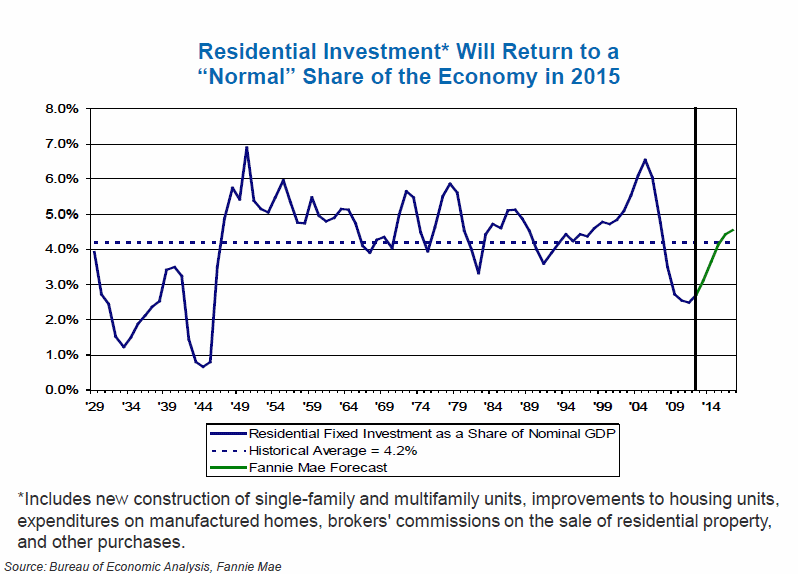Fannie Mae economists Doug Duncan, Orawin T. Velz, and Brian Hughes-Cromwick said today that despite two downside risk factors they see the economy gaining strength for the rest of the year, with economic growth averaging 2.5 percent in the second half after lackluster first and second quarter growth of 1.1 percent and 1.7 percent respectively.
The two exogenous macroeconomic factors that still prevail are the Federal Reserve's announced slowdown of its securities purchases which would likely put additional upward pressure on interest rates and the debate over federal expenditures and the related debt ceiling which have the potential for additional fiscal tightening.
Still, consumer spending is strengthening substantially and manufacturing and nonmanufacturing production indicators are increasing steadily. The mixed jobs report, the economists said, do not change their expectation of a September announcement from the Fed of a timetable to for scaling back its asset purchases and end the program by spring. They expect the Fed will keep the fed funds rate on hold until probably late in the first half of 2015.
Recent housing indicators have been mixed with single-family housing starts down slightly for the third time in four months in June while multi-family starts fell sharply following a surge in May. Leading indicators for single-family homebuilding such as permits rose in June for the third straight month so the writers speculate that the weakness in starts may reflect shortages in labor and available building lots and spikes in some building material costs.
New home sales jumped in June for the third month as inventories continued to increase. The number of completed new homes, however, fell to 3.9 months, tying the record low set earlier in the year. Tight inventory and the rising trend in permits will support building activity for the second half of the year and rising rates have not yet eroded homebuilder confidence which jumped to its highest level in seven years last month.
Existing home sales fell in June after rising for two consecutive months (although the National Association of Realtors announced a strong rebound this morning. Read More: Home Sales up 6.5 Percent; Prices Nearing Pre-Crash Peak) which may suggest some pullback reflecting the increase in mortgage rates. Mortgage applications for purchase have also trended lower in both the conventional and government sectors. Pending sales figures have continued to hold up well.

The economists say they expect that the historically tight supply conditions will continue to support further price gains as will the gradually diminishing shadow inventory. While mortgage delinquencies continue substantially higher than normal the Mortgage Bankers Association's 90 day rate has fallen to 5.9 percent, down nearly 4 percentage points from its 2009 peak.
The main measures of home prices are all up, most increasing in the low double digits on an annual basis for the last several months. The price appreciation is helping more homeowners return to a positive equity position in their homes.

Housing has consistently contributed to the GDP since the fourth quarter of 2010 and Fannie Mae expects it to gradually gain momentum from the 2.1 percent share of GDP in the second quarter of this year to a "normal" share of 4.2 percent by 2015.

The economists say they see little change in the forecast for mortgage rates and housing activity from those they made in July. The forecast of refinance originations this year was downgraded in July in response to higher interest rates but over the past month incoming data show refi originations remaining stronger than anticipated so they revised their projection up by nearly $100 billion and now expect total mortgage estimates to decline to $1.75 trillion from $2.03 trillion in 2012 with the refinance share dropping from 73.0 percent to 64.0 percent. Single-family mortgage debt should rise modestly during the year, the first annual increase in six years.







